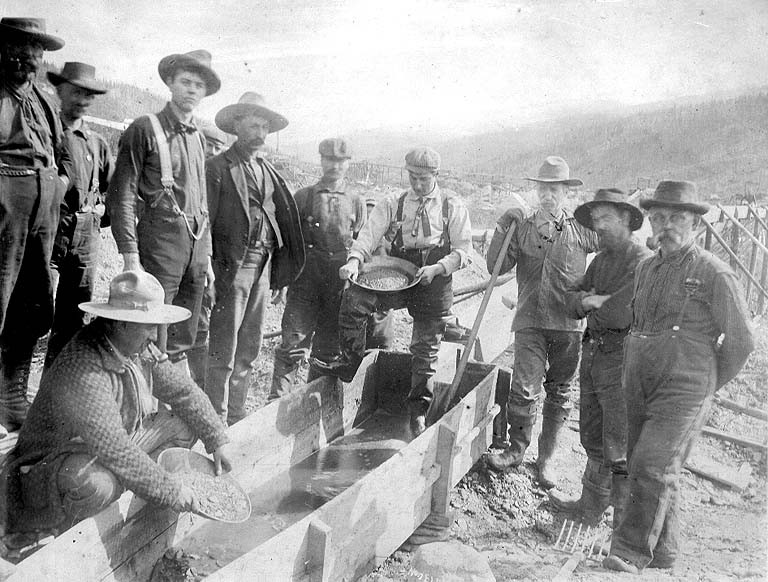
The Klondike Gold Rush of 1898 was a boom that could be heard around the world. Although it was short-lived, you can still hear the faint whispers of its allure – the seductive promise of instant wealth – with a visit to Dawson City, and a half hour drive to Gold Bottom. Once a town of 5000 people, Gold Bottom has just five residents these days, still involved in active gold mining. During the summer months (-40°C doesn’t draw too many people), you can sign up for a panning tour, sifting through real paydirt, with the bonus of being able to keep whatever you find. As you slip on your rubber boots and load your 14 inch metal pan with rocks and gravel, spare a thought for the hardened prospectors who came before you. When word finally got out about streams of gold discovered up north, some 100,000 people flocked to the Yukon in search of glory. Dawson City, a ramshackle outpost, became the largest Canadian city west of Winnipeg. The boom was such that a single room in Dawson might rent for $100 a month, when a 4-bedroom apartment in New York City would rent for only $120. Only 40,000 people accomplished the 400 kilometre journey through the rugged, winter landscape. To stake a claim on the Klondike and surrounding rivers, they would have bring along everything with them, and face months of dirty, backbreaking work.
Unfortunately, but the time the majority of prospectors arrived, most of the claims had been staked, the gold extracted, poems written, and fortunes already made. It didn’t take long for booming Dawson to sink back into the ghost towns of history, its proud salons literally sinking into the permafrost. Parks Canada and the government came to the rescue in the 1960’s, restoring the town as a national historic site, preserved for the thousands of tourists who visit each year. People visit from around the world for the history, the quirks, the scenery, the drives, and the boomtime legends. Like Chris Johansen, a miner on Hunker Creek, who offered one Cecile Marion her weight in gold if she would be his wife. An offer that cost him $25,000 when the 135 lbs. beauty agreed.
It’s the same Hunker Creek where David Millar is bent over and facing up-river, explaining how to pan the paydirt. His family has been operating the Gold Bottom mining camp for over three decades, expanding it with rustic log cabins and daily tours, rain or shine. Calf deep in the muddy brown water, he fills the pan with water, shaking it gently at first, while picking out the big rocks. Dipping the pan at a 45-degree angle, more water is added, the pan spun and shaken, the gravel slowly rinsed and discarded. Gold is 19 times heavier than water, so you’ll know you’ve got something by spotting tiny flakes resting at the top of the pan. It’s a slow process for first-timers, and you might walk away with anywhere between one and ten flakes. In the meantime, expect to learn about the entire process, the gold rush, and even see mammoth bones, teeth and tusks that have been discovered from miners digging into the permafrost. There’s a 3-inch nugget on display in the mine’s Gold Lodge, and enough value in the area to keep several mines in profitable operation. Walking away with a vial keepsake, your hard-won treasures certainly won’t be worth much in value, but panning at Gold Bottom, unlike prospecting in the 19th century, is all about the experience.
